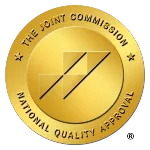A Deep Look Into the Most Common Kinds of OCD
According to the National Institute of Mental Health, obsessive-compulsive disorder has a lifetime prevalence of about 2.3%, meaning that it affects around 2.3% of the population at some point in their life. Despite the fact that obsessive-compulsive disorder (OCD) is a common mental health disorder, it is widely misunderstood.
OCD is marked by persistent obsessions and compulsions. However, the condition can manifest in many ways, meaning that those obsessions and compulsions could differ vastly depending on the person. Often, these symptom manifestations are called types or subtypes of OCD.
At Catalina Behavioral Health, we treat all OCD subtypes. Our providers are versed in what it truly means to live with OCD symptoms, and we offer multiple treatment programs for the condition so that you can choose the one that fits your needs best.
Developing a better understanding of OCD can help people get the treatment they need. This article will provide an in-depth look at the most common kinds of OCD, as well as other possible manifestations of OCD and treatment options.
Get Confidential Trauma and PTSD Assessment
What are the 4 Types of OCD?
There are more than four subtypes of OCD. That said, when people ask what the four types of obsessive-compulsive disorder are, they’re generally asking about the most well-known manifestations of the condition.
Most of the time, OCD will fall into one of the following four categories. Every subtype of OCD has the potential to affect the quality of your daily life severely.
Contamination OCD
Contamination OCD is a well-known type of OCD. Someone with this type of OCD will experience obsessions and compulsions related to contamination. If you have contamination OCD, you may:
- Avoid physical objects, surfaces, or places that might be contaminated.
- Have obsessive fears of dirt, germs, or getting sick.
- Seek reassurance that things are not contaminated.
- Clean objects or surfaces excessively.
- Wash your hands excessively.
This type of OCD can look like what you’d expect, but not always. For example, it is common for people with contamination OCD to clean excessively. While many people with this subtype of OCD do indeed have compulsive cleaning rituals, some might actually be afraid to touch dirty objects or surfaces, which could make it hard to clean.
Harm OCD

Harm OCD will cause you to obsess over accidentally harming yourself or someone else. As a person with harm OCD, you might experience:
- Physical or mental rituals, which can be paired with thoughts such as, “If I do this, my mom will not get hurt.” These mental rituals could be related or seemingly unrelated to the fear of causing harm. For example, someone may count in their head following a violent thought so that it does not come to fruition.
- Violent thoughts (whether in words or mental images). These unwanted thoughts are a good example of intrusive thoughts in OCD. These thoughts are not something that the person would act on–they don’t even want to act on them. In turn, these thoughts may cause guilt or emotional distress. These thoughts are sincere intrusions; they aren’t the same as a daydream someone may have while they are angry, for example.
- Fears related to harming yourself or someone else, which could manifest in many different ways.
You may experience other symptoms, such as avoiding situations where you may be more likely to experience intrusive thoughts of harming yourself or another person.
“Just Right” OCD
Someone with “just right” OCD may repeat actions (e.g., folding a towel) until they are “just right.” This manifestation of OCD is largely marked by perfectionism paired with compulsive behaviors like reassurance-seeking, avoidance of situations where perfection is not achievable, or, again, repeatedly fixing something until it is “just right.”
Unacceptable or “Taboo” Thoughts
With this type of OCD, people develop unwanted or intrusive thoughts, images, or urges surrounding taboo or unacceptable ideas and thoughts. The intrusive thoughts you experience with this type of OCD may disturb you or cause significant distress, but they aren’t reflective of what you actually think or want to do.
This can encompass:
- Postpartum OCD
- Pedophilia OCD
- Beastiality
- Necrophilia
- Incest
Your unacceptable or “taboo” thoughts could also relate to something else. This is by no means an exhaustive list.
Additional Manifestations of OCD

OCD can latch onto anything. Talking about all of the different types of OCD–beyond the most popular or well-known manifestations–can help people understand the condition in themselves and get language for those experiences.
It might even be the first step toward a proper diagnosis for those who do not have one already. OCD subtypes we have not yet covered include but aren’t limited to:
- Religious OCD, also called Scrupulosity OCD or moral absolutism. People with this type of OCD may obsess over being “good” or moral, engage in compulsive prayer, or experience obsessive worry or fear about whether or not they’ve done something unethical or that goes against their faith (e.g., “Did I have an impure thought while in church? Am I bad?”)
- Relationship OCD, where OCD symptoms specifically target interpersonal relationships. Also called “ROCD,” someone with this type of OCD might obsess over whether they are in the right relationship, whether their partner loves them, or otherwise experience excessive worries or fears about either their partner or relationship.
- Purely obsessional or “Pure O” OCD, where compulsions are 100% mental. For example, someone may experience mental rituals rather than compulsions like cleaning that are visible to the eye.
- Sensorimotor OCD, a type of OCD characterized by an excessive focus on bodily sensations and functions, like your breathing, swallowing, or heart rate.
It is possible to experience more than one subtype of OCD, and some of these could be grouped in with one of the other OCD subtypes we discussed.
Get Effective Trauma Treatment Options at Catalina
Understanding OCD Obsessions and Compulsions
Everyone with obsessive-compulsive disorder will experience obsessions and compulsions, but what does that mean?
OCD is a complex disorder, and since there are so many different types of OCD, it’s important to gain a better understanding of the diverse ways obsessions and compulsions can present.
Obsessions in OCD
The best way to understand obsessions with OCD is to think of the word “obsession” as a shorthand for the topic or topics that the person’s OCD has decided to target. You may not think of yourself as an obsessive person, and the reason for that is that OCD isn’t a personality trait; it’s a mental illness, and nothing about OCD is purposeful.
People with OCD may ruminate and experience obsessive fear about one or more situations or things. For example, if your OCD relates to morals, you may obsess over how to navigate a situation in the most ethical way possible (in accordance with your values).
OCD obsessions can be torturous. You may experience what’s called a “thought loop,” which refers to feeling stuck in a loop of obsessive thoughts related to a specific subject. For example, upon experiencing a trigger, someone with OCD might be entirely fixated on fearful thoughts like “Did I hurt my child/parent/friend/self? How can I be sure? Is it going to be okay? How do I undo the harm?”
In OCD treatment, you’ll likely find that taking steps like acknowledgment (e.g., “I am experiencing a thought loop right now”), radical acceptance, grounding exercises, and re-direction of your thoughts (for example, focusing on another activity) helps. Untreated, these thought loops can be serious mental spirals that other people do not understand.
Compulsions in OCD
Compulsions in OCD refer to repetitive behaviors manifesting through physical actions, thoughts, or speech. Examples of OCD compulsions include:
- Repeating words or phrases silently or in your head. For people with religious OCD, this can include reciting prayers. Another example could be counting in your head.
- Checking compulsions (e.g., checking to make sure that the door is locked). There is a subtype of OCD called checking OCD, which is largely characterized by compulsive checking behaviors.
- Compulsive avoidance of people, places, or things due to distressing thoughts related to obsessions.
- Seeking reassurance from others.
- Arranging objects.
OCD affects everyone differently. Like with obsessions, your compulsions will be unique to you and the type or types of OCD you have.
Our Effective Treatments for OCD Symptoms

Treating OCD is possible. At Catalina Behavioral Health, we use the most effective and up-to-date treatments used to address obsessive-compulsive disorder.
Since everyone with the mental health condition will respond most favorably to different approaches, the Catalina Behavioral Health team will collaborate with you to establish a personalized OCD treatment plan. With that in mind, effective treatments for OCD symptoms typically include:
Mental Health Medications
Medications can be used alongside therapy to treat OCD. The most common medications prescribed to treat OCD are antidepressant medications, such as the following. These can also be prescribed for other conditions, like depression and anxiety disorders.
Alternative medications, like mood stabilizers or tricyclic antidepressants, may be used for people with OCD in some cases. At Catalina Behavioral Health, we have psychiatrists who can help you find the right medication regimen if applicable.
Selective Serotonin Reuptake Inhibitors (SSRIs)
Selective serotonin reuptake inhibitors, or SSRIs, are a type of antidepressant. Examples of SSRI medications that may be used to treat obsessive-compulsive disorder include Prozac, Zoloft, and Paxil.
Serotonin Norepinephrine Reuptake Inhibitors (SNRIs)
Like SSRIs, SNRIs are a type of antidepressant medication. Examples of SNRIs that might be used to help treat OCD include Cymbalta and Effexor.
Evidence-Based Therapies for OCD
Therapists working with OCD should start the therapy process by talking with you about your symptoms, which may include getting an idea of how severe your symptoms are and when they began. Our inpatient and outpatient programs use evidence-based therapies to treat OCD, which include:
Cognitive Behavioral Therapy With Exposure and Response Prevention (ERP)
ERP is the first line of treatment recommended for OCD, so it is likely the first treatment option you will try. According to the International OCD Foundation (IOCDF), 70% of people with OCD will benefit from ERP therapy, medication, or a combination of the two.
Acceptance and Commitment Therapy (ACT)
ACT is a popular type of therapy with several fundamental principles, such as acceptance, cognitive diffusion, and mindfulness. When used for OCD, ACT focuses on accepting that you experience symptoms like obsessive thoughts without acting on them.
Like cognitive behavioral therapy with exposure and response prevention, therapies like ACT can be used alone or in addition to medication.
What Are the Risks of Untreated OCD?
Working to manage OCD is worth it, even if it takes time. The most obvious risk you face if you do not get help for OCD is the continuation or worsening of OCD symptoms.
Self-isolation, substance abuse, worsening of other mental health disorders, like depression, physical health decline, and suicide or suicidal ideation are also possible risks of untreated OCD.
What are the Causes of OCD?

There’s no single cause of OCD. There are risk factors linked to the development of OCD, including but not limited to family history, brain differences, and trauma. Those who have a first-degree relative, like a parent, with OCD are significantly more likely to live with it themselves.
Pediatric autoimmune neuropsychiatric disorders associated with streptococcal infections (PANDAS) can also cause or worsen OCD symptoms. PANDAS is a condition developed in children following a strep throat infection, but symptoms persist in adulthood.
Inpatient and Outpatient Treatment for OCD
At Catalina Behavioral Health, we have inpatient and outpatient treatment programs for people facing mental health, substance abuse, and dual-diagnosis disorders. By offering inpatient, partial hospitalization, intensive outpatient, and outpatient programs in Arizona, we’re able to provide treatment schedules that meet the unique needs of all of our clients.
People with severe symptoms may need a higher level of care, like inpatient or partial hospitalization. Others, such as those who need to work while getting help for OCD, may benefit from a program like our intensive outpatient program (IOP) for mental health.
The International OCD Foundation[1] recommends inpatient and outpatient mental health treatment programs for people with OCD who need more support than traditional therapy sessions can provide. Before you start treatment with us, our friendly team will talk with you and help you decide on the ideal starting care level for you.
Get Help for Obsessive-Compulsive Disorder at Catalina Behavioral Health

Let’s be clear: many people with OCD can (and do) lead fulfilling lives. Appropriate treatment can help you break free from the implications of untreated OCD symptoms.
Catalina Behavioral Health offers comprehensive and effective OCD treatment in the greater Tucson area. We accept most forms of health insurance to make getting the most effective treatment possible for people like you or your loved one with OCD.
To learn more about how we can help you or someone you know who is living with OCD, please call our admissions line today.
Our caring team is here to answer your questions about OCD treatment, run an insurance verification check, and start the intake process when you or your loved one are ready to begin recovering with proven support programs.
Up To 100% of Rehab Costs Covered By Insurance
FAQs Regarding Obsessive-Compulsive Disorder (OCD) and Subtypes
What is the most common OCD type?
Right now, contamination OCD is considered the most common type of OCD.
How can you tell if someone has OCD?
While people may notice OCD symptoms in others that can help lead to a diagnosis–for example, a parent may notice OCD symptoms in their child–you can’t always tell that someone has OCD by looking. In fact, many people find that their OCD is invisible to others. Few may be able to see the level of distress OCD causes you or how severely it impacts your life.
What are the 4 levels of OCD?
Obsessive-compulsive disorder can be categorized into different severity levels. OCD can be mild, moderate, severe, or extreme.
Keeping track of the severity of a client’s symptoms can be a part of the treatment process. For example, during your treatment with us, we may assess your current quality of life, challenges, and distress caused by symptoms.
As treatment for OCD progresses, the goal is to reduce symptom severity. Reducing the severity of OCD symptoms can improve your quality of life and functioning.
What is the difference between OCD and intrusive thoughts?
Intrusive thoughts can be a part of OCD and other mental disorders; these thoughts can be jarring, but they are a symptom rather than a mental health condition. For obsessive-compulsive disorder to be diagnosed, a person must meet the full criteria for the disorder outlined in the Diagnostic and Statistical Manual of Mental Disorders (DSM).
What are the DSM-5 categories for OCD?
Once regarded as an anxiety disorder, OCD is now under a category of its own in the DSM, called obsessive-compulsive and related disorders. This category encompasses both OCD itself and related conditions, such as hoarding disorder, body dysmorphic disorder, and trichotillomania.
Obsessive-compulsive personality disorder (OCPD) is not a type of OCD, and it is not included in obsessive-compulsive and related disorders. Instead, OCPD is a personality disorder.
References
- https://www.nimh.nih.gov/health/statistics/obsessive-compulsive-disorder-ocd
- https://beyondocd.org/ocd-facts/approved-medications
- https://iocdf.org/about-ocd/treatment/
- https://pmc.ncbi.nlm.nih.gov/articles/PMC9139700/
- https://pmc.ncbi.nlm.nih.gov/articles/PMC7059158/
- https://medlineplus.gov/obsessivecompulsivedisorder.html
- https://pmc.ncbi.nlm.nih.gov/articles/PMC9407245/




